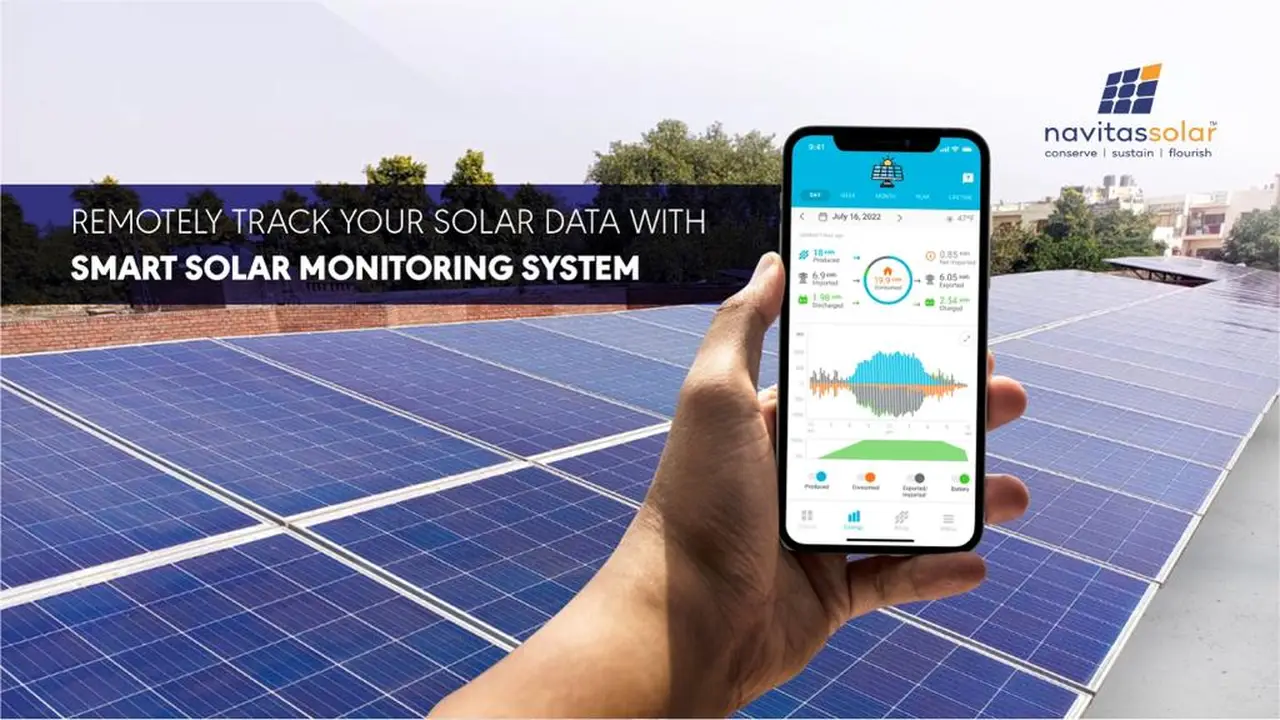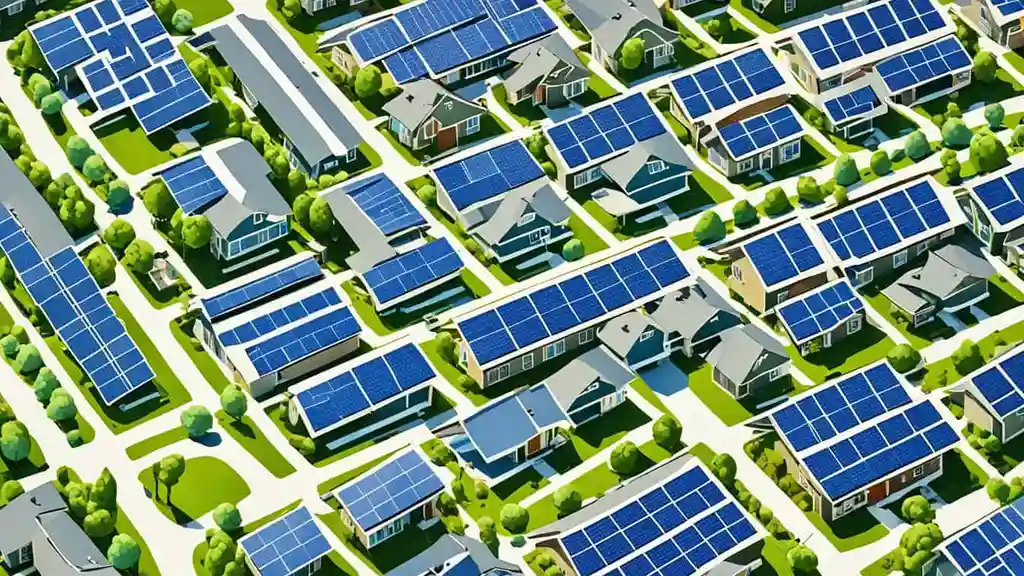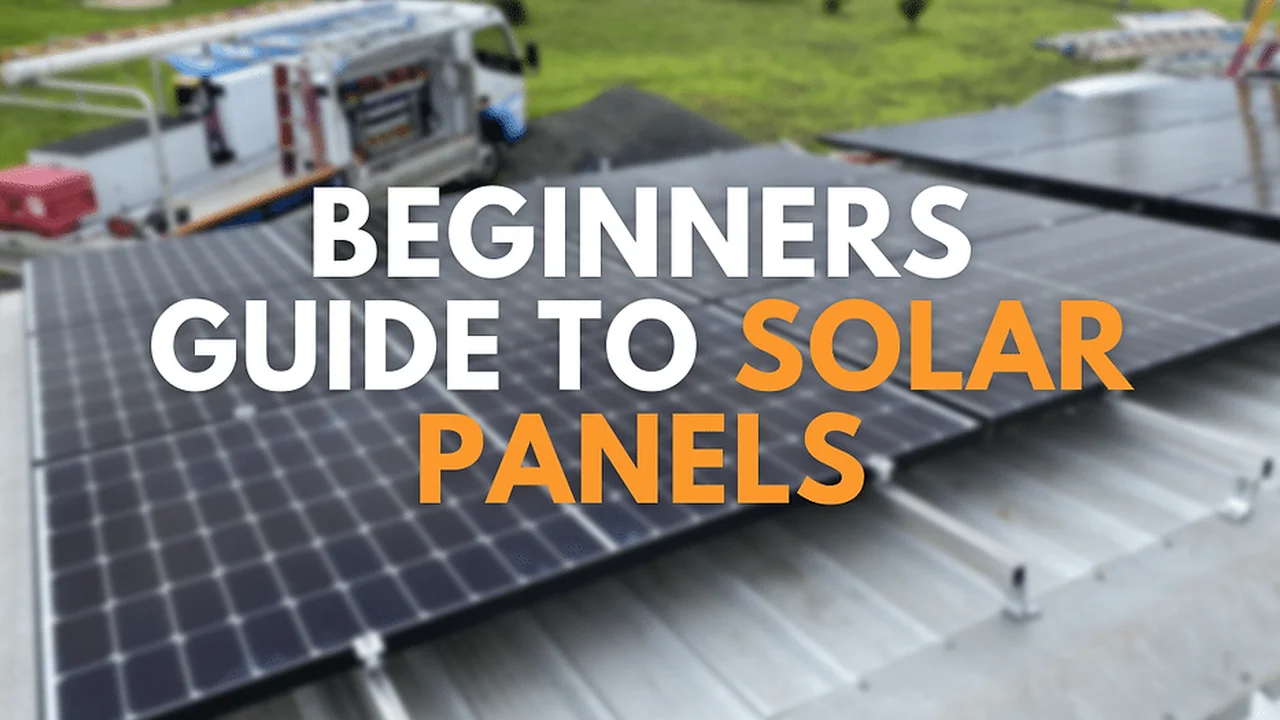Solar Panel Monitoring Systems: Tracking Performance Data

Understanding the Importance of Solar Panel Monitoring Systems
Hey there, future solar power guru! So, you've got solar panels, which is awesome! But are you really getting the most bang for your buck? That's where solar panel monitoring systems come in. Think of them as the Fitbit for your solar array. They track everything, from how much energy you're generating to potential problems lurking beneath the surface. Without monitoring, you're basically driving blind. Let's dive into why these systems are so crucial.
First off, these systems provide real-time performance data. You can see exactly how much energy your panels are producing at any given moment. This allows you to identify any dips in performance immediately. Is a tree branch casting a shadow? Is there a malfunctioning panel? You'll know right away, and you can take action before it costs you serious energy and money.
Secondly, monitoring helps you optimize your energy usage. By understanding your production patterns, you can adjust your consumption habits. For example, maybe you can shift some of your energy-intensive activities to times when your panels are generating the most power. This maximizes your self-consumption and minimizes your reliance on the grid.
Finally, monitoring systems provide peace of mind. You'll have a complete picture of your solar investment, knowing that everything is running smoothly. This is especially important if you're relying on solar power for a significant portion of your energy needs.
Key Metrics Tracked by Solar Monitoring Systems
Okay, so what exactly *do* these systems track? Here's a rundown of some of the most important metrics:
- Energy Production (kWh): This is the total amount of energy your panels have generated over a given period.
- Power Output (kW): This shows the instantaneous power your panels are producing at any given moment.
- System Voltage and Current: These readings indicate the electrical health of your system. Abnormal values can signal potential problems.
- Panel Temperature: Overheating can reduce panel efficiency. Monitoring temperature helps identify potential issues.
- Inverter Performance: The inverter converts DC electricity from your panels to AC electricity for your home. Monitoring its performance is crucial.
- Irradiance: This measures the amount of sunlight hitting your panels. It helps you understand whether your panels are performing as expected given the available sunlight.
Types of Solar Panel Monitoring Systems Available
Now let's talk about the different types of monitoring systems out there. You basically have two main categories:
- Hardware-Based Monitoring: This involves installing physical sensors and data loggers directly into your solar system. These systems often provide more granular data and are typically more reliable, but they can be more expensive to install.
- Software-Based Monitoring: This relies on data provided by your inverter and other system components. It's often less expensive and easier to set up, but it may not be as accurate or comprehensive as hardware-based monitoring.
Within these categories, you'll find a wide range of specific products with varying features and capabilities.
Recommended Solar Panel Monitoring Products and Their Use Cases
Alright, let's get down to brass tacks and talk about some specific products. Remember, the best system for you depends on your specific needs and budget.
Enphase Energy Enphase IQ Envoy
Use Case: Ideal for homeowners with microinverter-based solar systems. Enphase microinverters already provide panel-level data, and the IQ Envoy aggregates this information into a user-friendly dashboard.
Features: Real-time performance monitoring, remote diagnostics, over-the-air software updates, and integration with the Enphase Enlighten mobile app.
Pros: Extremely accurate panel-level data, easy to install and use, excellent mobile app.
Cons: Only compatible with Enphase microinverter systems, can be more expensive than other options.
Estimated Price: $500 - $700
SolarEdge Monitoring Portal
Use Case: Designed for use with SolarEdge inverters and power optimizers. Provides string-level monitoring and advanced diagnostics.
Features: Real-time performance monitoring, module-level optimization, remote troubleshooting, and integration with the SolarEdge monitoring platform.
Pros: Comprehensive monitoring capabilities, excellent performance optimization, detailed reporting.
Cons: Requires SolarEdge inverter and power optimizers, can be complex to set up.
Estimated Price: Included with SolarEdge inverter purchase, but may require additional fees for advanced features.
Sense Energy Monitor
Use Case: A whole-home energy monitor that can also track solar production. It learns your appliances and identifies energy usage patterns.
Features: Real-time energy monitoring, appliance identification, solar production tracking, mobile app with detailed insights.
Pros: Affordable, easy to install, provides insights into overall home energy consumption, not just solar production.
Cons: Solar monitoring is less detailed than dedicated solar monitoring systems, appliance identification can take time to learn.
Estimated Price: $300 - $400
SMA Sunny Portal
Use Case: Compatible with SMA inverters. Offers a user-friendly interface for monitoring solar system performance.
Features: Real-time data visualization, automatic error detection, remote system configuration, and mobile app support.
Pros: Comprehensive monitoring features, reliable data, and excellent integration with SMA inverters.
Cons: Requires SMA inverter, can be less feature-rich than some other options.
Estimated Price: Included with SMA inverter purchase, may have subscription fees for advanced features.
Comparing Different Solar Panel Monitoring Systems
So, how do you choose the right system for you? Here's a quick comparison:
| Feature | Enphase IQ Envoy | SolarEdge Monitoring Portal | Sense Energy Monitor | SMA Sunny Portal |
|---|---|---|---|---|
| Panel-Level Monitoring | Yes | Yes (with power optimizers) | No | No |
| Ease of Installation | High | Medium | High | Medium |
| Cost | Medium | Medium (bundled with inverter) | Low | Medium (bundled with inverter) |
| Whole-Home Energy Monitoring | No | No | Yes | No |
| Ideal Use Case | Enphase microinverter systems | SolarEdge systems | Homeowners wanting overall energy insights | SMA inverter systems |
When making your decision, consider the following factors:
- Compatibility: Make sure the system is compatible with your inverter and other solar components.
- Features: Choose a system that offers the features you need, such as panel-level monitoring, remote diagnostics, and mobile app support.
- Ease of Use: Look for a system that is easy to install, configure, and use.
- Cost: Consider the upfront cost of the system, as well as any ongoing subscription fees.
Troubleshooting Common Issues Detected by Solar Monitoring Systems
Okay, your system is up and running, but what happens when it flags an issue? Here's a quick guide to troubleshooting some common problems:
- Low Energy Production: Check for shading, panel soiling, or inverter problems.
- High Panel Temperature: Ensure panels are properly ventilated and not obstructed.
- Inverter Errors: Consult your inverter manual for specific error codes and troubleshooting steps.
- Communication Errors: Check your internet connection and ensure all devices are properly connected.
If you're not comfortable troubleshooting these issues yourself, contact a qualified solar installer or electrician.
The Future of Solar Panel Monitoring Technology
The future of solar panel monitoring is looking bright (pun intended!). We're seeing advancements in AI and machine learning that can predict potential problems before they even occur. Imagine a system that can automatically schedule maintenance based on predicted performance degradation. That's the kind of innovation we can expect in the years to come.
We're also seeing more integration with smart home devices, allowing you to control your energy usage and optimize your solar production from a single interface. The possibilities are endless!
Investing in Solar Panel Monitoring: Is It Worth It?
So, is investing in a solar panel monitoring system worth it? Absolutely! It's a small price to pay for the peace of mind and potential energy savings it provides. By tracking your system's performance, you can ensure that you're getting the most out of your solar investment and maximizing your return.
Think of it this way: you wouldn't buy a car without a speedometer, would you? A solar panel monitoring system is the speedometer for your solar array, giving you the information you need to keep your system running smoothly and efficiently. So go ahead, invest in a monitoring system and start tracking your performance data today! You won't regret it.
:max_bytes(150000):strip_icc()/277019-baked-pork-chops-with-cream-of-mushroom-soup-DDMFS-beauty-4x3-BG-7505-5762b731cf30447d9cbbbbbf387beafa.jpg)





